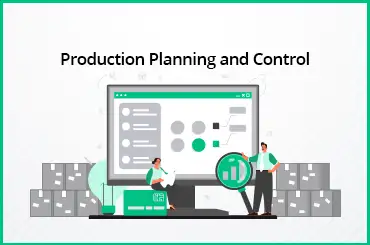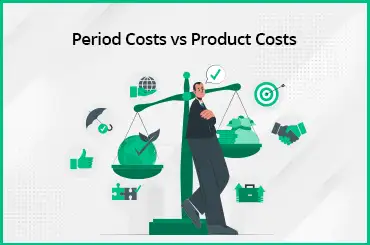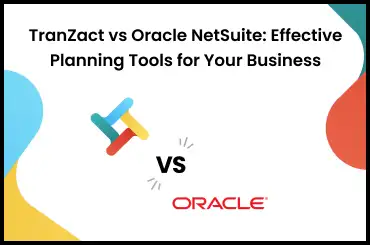Supply chain trends are continuously evolving. Such developments provide intriguing opportunities to improve efficiency, resilience, and customer happiness. Moreover, the latest supply chain management trends transform supply networks, enabling innovation and growth.
Supply networks must adapt like living things. Robotic Process Automation (RPA), cloud computing, and artificial intelligence (AI) replace weak connections and change the supply chain software industry.
We have covered the top 14 supply chain trends in 2024 to get a deep insight into the same. Let’s begin.
Supply Chain Trends - Key Takeaways
The following are the significant takeaways from supply chain trends 2024:
- Through technologies such as AI, blockchain, and IoT, digital transformation is transforming supply chains and allowing increased efficiency and cooperation.
- Predictive analytics and advanced data analysis assist businesses in making accurate demand estimates, optimizing inventories, and improving supply chain planning.
- Companies prioritize sustainability and green efforts, implement eco-friendly practices, and incorporate renewable energy sources.
- Shared data, cooperative planning, and improved communication improve supplier collaboration and transparency.
14 Supply Chain Trends to Know in 2024
Here are the Top 14 Trends That Will Shape 2024's Supply Chain Landscape:
1. Supply Chain Agility
Most trends in supply chain management developments are backed by agility. During the epidemic and afterward, leaner supply networks caught many organizations off guard.
- Micro Supply chains: Some companies are evolving from fully integrated to modular, coordinated operations that service numerous business streams utilizing parallel, self-contained micro supply chains.
- Micro Warehousing and fulfillment: Warehousing and fulfillment are also going small. Traditional logistics businesses, retail establishments, and e-commerce giants' overbuilt supply networks use smaller storage capacities in more locations.
- Microservices: API-linked microservices provide modular updates. They enable meeting a specific business need without the requirements and complications of adding new functionality to a whole program.
2. Localized Supplies
Localizing goods can help a business limit its exposure to today's geopolitical concerns, transportation expenses, and delays. Companies may hesitate to localize a supply chain if it requires a large upfront investment, greater workforce costs, or the construction of a new supply network from the start.
3. Increased Inventory Reserves
Whether it's for raw materials or finished products, the cost of goods on the balance sheet requires forward-looking and flexible evaluations. Higher volatility necessitates more frequent calculations of inventory reserves and a continuous evaluation of other aspects of inventory management in the upcoming year.
4. Sustainability
Here are a few basic improvements your company may make to begin the transition to a more sustainable supply chain:
- Determine the most serious danger to your product's or industry's sustainability.
- Packaging should be redesigned to be more ecologically friendly.
- When possible, use alternative energy sources (such as hydrogen, electric, or hybrids) for your logistics vehicles, and look for raw material suppliers who use green transportation strategies.
5. The Internet of Things (IoT)
One of the key future trends in supply chain management is IoT. It is a network of physical items that are digitally connected and accessible from anywhere, thanks to a wireless network. It plays a big role in the supply chain, notably in logistics, but with more diversified applications, it is set to expand in prominence.
IoT may be utilized to enhance warehouse management, fleet monitoring, inventory control, technical and mechanical maintenance, and offer additional supervision in operations and transportation.
6. Increased Scope of E-commerce
Following an exceptional spike in online buying early in the pandemic, B2C e-commerce has thrived till date. B2B is poised to become a larger e-commerce sector, as sales on B2B marketplaces skyrocketed in the early 2020s.
This tidal change will increasingly encompass B2B marketplace purchases of the real raw materials and components that go into finished products rather than merely office supplies and other requirements for running a firm.
7. Customer-Centricity
As customers grow more digitally linked to companies, supply chains play an increasingly essential role in customer experience. It's natural that, these days, every customer and business wants to know where their purchase is in the supply chain with the click of a link.
Investing in customer experience and cooperating across corporate divisions helps the business expand and supports traditional supply chain activities like forecasting and inventory optimization.
8. Customization
Customer demand for more options and customization is increasing. However, supplying such product diversity in 2023 may necessitate new supply chain models and considerable attention to cost and complexity.
Mass customization, which combines mass manufacturing with personalization to create distinctive items on a reasonably big scale yet at a reasonable cost, is one option for meeting this need.
9. Integration of Flexible Contracts
Supply chains heavily reliant on long-term fixed-price contracts often struggle with volatility, hindering cost savings. To address this challenge, new-model contracts are emerging, aiming to foster mutually beneficial relationships between buyers and suppliers. These flexible contracts empower buyers to split orders into smaller blocks and modify them as market conditions evolve.
10. Cloud-Based Solutions
Cloud-based solutions, as a prominent supply chain trend in 2023, refer to software and applications hosted on remote servers accessible through the internet. These solutions offer several benefits, including scalability, flexibility, and cost-effectiveness, as they eliminate the need for on-premises infrastructure and maintenance.
The cloud allows supply chain managers to access essential information from wherever they are, which is important in a 24-hour business.
11. Advanced Automation
This involves the integration of sophisticated technologies such as robotics, AI, and machine learning (ML) to streamline and optimize various supply chain processes.
12. Increased Visibility
Increased visibility will allow you to understand the condition of your supply chain at a high level and at individual links, allowing you to enhance your whole supply chain. Visibility guarantees that data is accessible to all stakeholders, including customers and internal parties.
With greater visibility in your supply chain, you can avoid minor difficulties like order mistakes or delivery delays and respond to problems faster.
13. Improved Forecasting
Greater visibility will continue to hone organizations' demand forecasting skills. A more advanced demand forecasting model aims to create projections over the long, medium, and short term and respond to continuous swings by combining more visibility and advanced analytics.
14. AI and Machine Learning
In several industries, the usage of artificial intelligence (AI) and automation is increasing with leaps and bounds. Automation has been a long-standing practice that leverages emerging supply chain technology trends to minimize human involvement by utilizing machines to perform a range of tasks.
Challenges in Supply Chain Trends
The following are some key trends of supply chain challenges:
1. Demand Volatility
It can be caused by rapidly changing client needs, market dynamics, and unanticipated occurrences such as natural catastrophes or pandemics.
2. Supply Chain Vulnerabilities
Supply chains are vulnerable to various hazards, including supplier interruptions, geopolitical uncertainty, trade disputes, and natural calamities.
3. Talent Scarcity
As the supply chain landscape evolves, competent workers with knowledge in areas like data analytics, digital technologies, and sustainability are in high demand. However, talent scarcity in these specialized areas makes it difficult for organizations to attract and keep qualified candidates.
4. Customer Relations
Customer awareness and regulatory obligations are driving the demand for sustainable and ethical supply chain practices.
5. Adopting the Latest Technology
Adopting digital technologies like AI, IoT, and blockchain necessitates good integration with current systems and processes.
Refine Your Supply Chain With TranZact
The dynamic nature of supply chains is a continuous adaptation to emerging trends. In 2023, supply chain management is embracing agility to navigate challenges such as inflation, uncertain customer demand, and labor shortages. TranZact helps streamline core business operations such as inventory, production and material handling with technology, to position yourself for success in the ever-evolving supply chain landscape.
FAQs on Supply Chain Trends
1. What are the emerging supply chain trends?
In 2023, the supply chain will focus on agile approaches to tackle challenges like inflation, unpredictable customer demand, and labor shortages.
2. What can we expect in the future of supply chain management?
The future of supply chain management involves the accelerated adoption of artificial intelligence to enable agility in an uncertain environment. This trend aligns with advancements like cloud computing, the Internet of Things, and automation.
3. How has the supply chain performed in 2024?
In 2022, supply chain managers were restructuring operations and strengthening digital controls to navigate volatility from various factors, including inflation and labor shortages.
4. What are the top five challenges faced by supply chains?
The five significant challenges confronting supply chains include inflation, unpredictable consumer demand, labor shortages, disrupted logistics, and the impact of extreme weather events.
5. What role does AI play in supply chains?
Artificial intelligence (AI) automates processes, predicts demand patterns, optimizes routes and logistics, and detects abnormalities. It allows real-time decision-making, enhancing efficiency, accuracy, and responsiveness.
6. What opportunities does e-commerce growth present for supply chains?
E-commerce growth requires rapid order fulfillment, effective reverse logistics, seamless omnichannel experiences, and real-time inventory management. This allows supply chains to adapt with automation, AI, and data analytics.
7. How does blockchain technology impact trends in the supply chain?
Blockchain technology's secure, transparent, and immutable record-keeping improves traceability, supply chain trust, inventory monitoring, and authenticity verification.
8. How can supply chain visibility improve overall efficiency?
Improved supply chain visibility enables real-time tracking, better demand forecasting, and proactive issue resolution, resulting in streamlined operations and increased efficiency.















